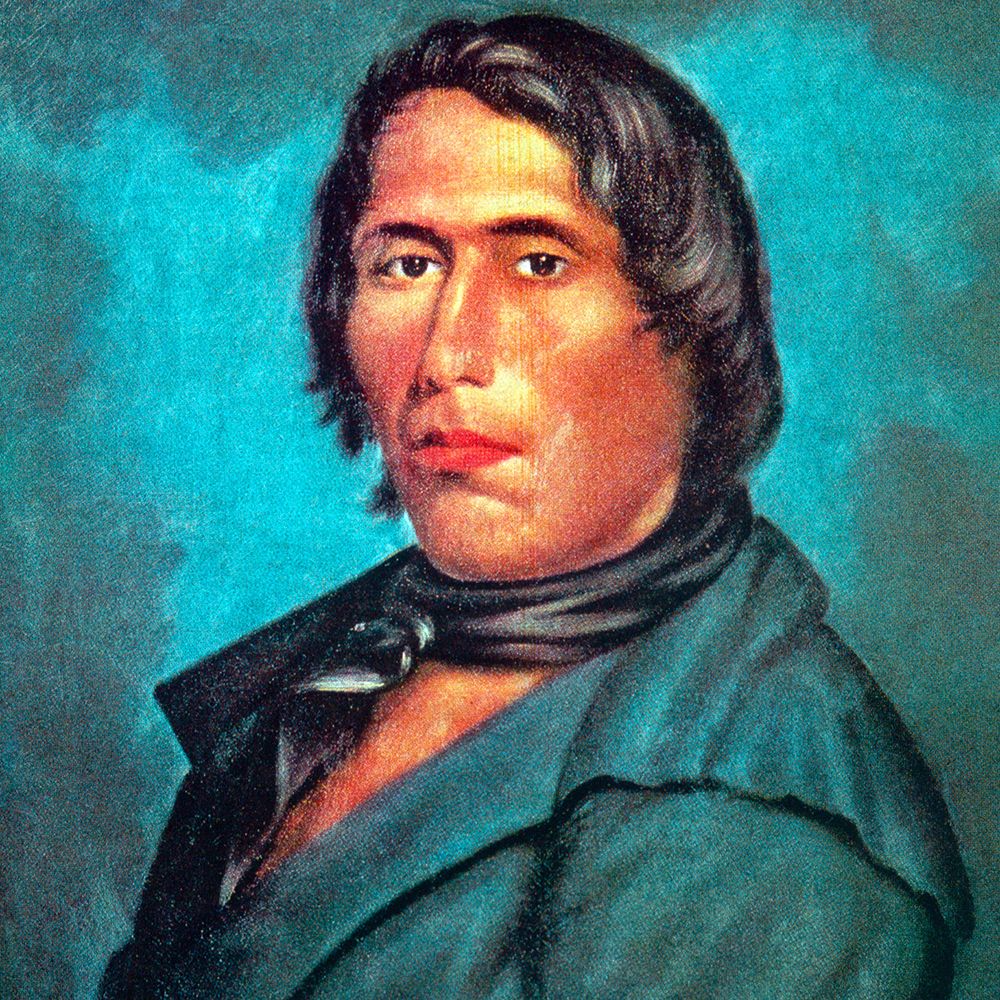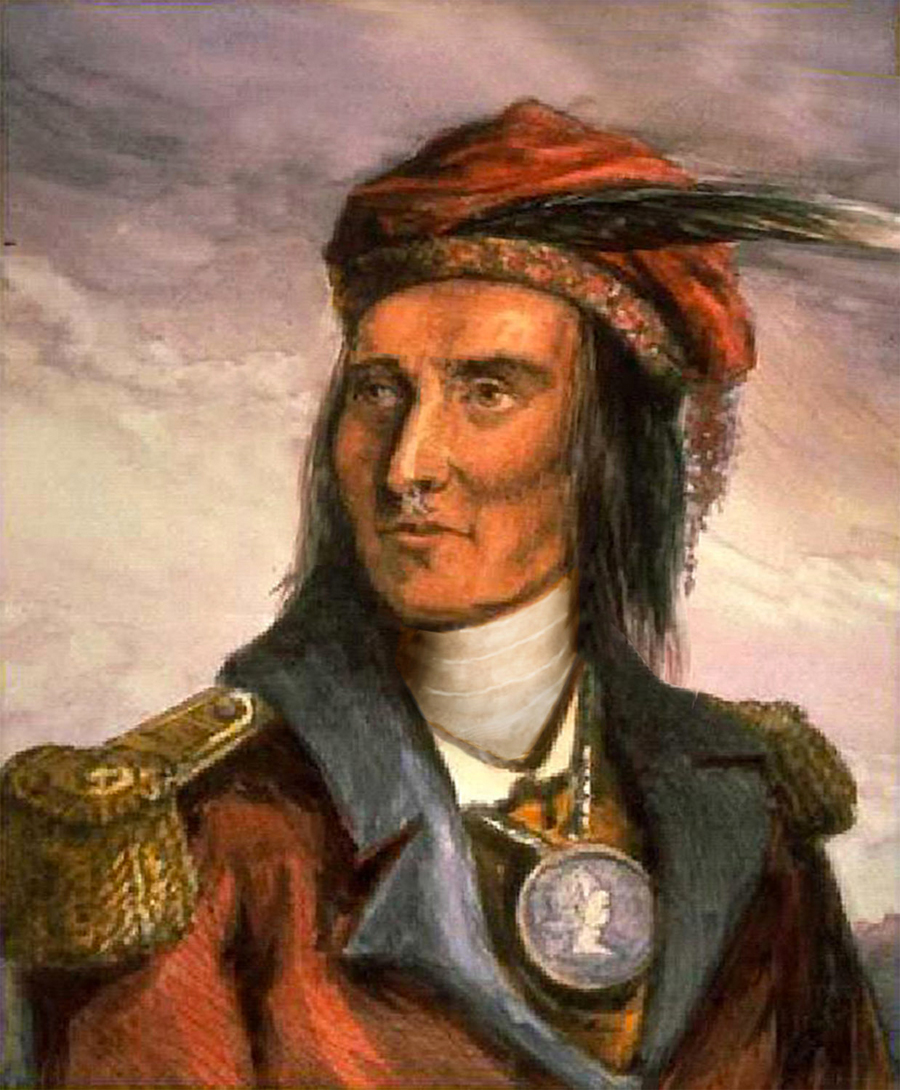
The Meteor Across the Frontier: Who Was Tecumseh?
In the annals of North American history, few figures burn as brightly and briefly as Tecumseh, the Shawnee warrior and diplomat whose name means "Shooting Star" or "Panther Crossing the Sky." Born in 1768 in the Ohio Country, a land then fiercely contested between Native nations and the burgeoning United States, Tecumseh emerged not merely as a chief of his own people, but as the architect of a grand, audacious vision: a pan-Indian confederacy strong enough to halt the relentless tide of American expansion and reclaim the sovereignty of Indigenous peoples. His life, marked by personal tragedy, unwavering conviction, and extraordinary leadership, culminated in a heroic struggle that forever etched his name into the fabric of the continent’s story.
Tecumseh’s early life was steeped in the violence and displacement that characterized the American frontier. His father, Puckeshinwa, a Shawnee war chief, was killed in 1774 at the Battle of Point Pleasant, a decisive engagement in Lord Dunmore’s War. This loss, followed by the murder of his mother and the repeated forced relocations of his people, instilled in Tecumseh a profound understanding of the existential threat posed by American settlers. He witnessed firsthand the broken treaties, the insatiable hunger for land, and the devastating impact of European diseases and alcohol on Native communities. These experiences forged his resolve to resist, not just for the Shawnee, but for all Indigenous nations.

Unlike many leaders of his time who sought accommodation or negotiated individual tribal treaties, Tecumseh understood that the piecemeal surrender of land was a path to oblivion. He developed a radical, unifying philosophy: the land belonged to all Native peoples in common, gifted by the Great Spirit, and therefore no single tribe or individual had the right to sell it. This fundamental principle formed the bedrock of his political and military strategy. "Sell a country!" he famously declared. "Why not sell the air, the great sea, as well as the earth? Did not the Great Spirit make them all for the use of his children?"
This visionary stance set him apart. While other chiefs grappled with the immediate pressures of land cessions and the lure of American goods, Tecumseh was traveling thousands of miles, from the Great Lakes to the Gulf of Mexico, tirelessly urging disparate tribes – the Creek, Choctaw, Chickasaw, Cherokee, Miami, Delaware, Kickapoo, Potawatomi, Wyandot, and others – to put aside ancient rivalries and unite under a common banner. His charisma, eloquence, and unyielding commitment to his cause were legendary. He was described by contemporaries, both Native and American, as possessing a commanding presence, piercing eyes, and a powerful oratorical style that could sway even the most skeptical audiences.
Crucial to Tecumseh’s movement was the spiritual revival led by his younger brother, Tenskwatawa, known as "The Prophet." Tenskwatawa, originally named Lalawethika, had a profound spiritual awakening in 1805 after a near-death experience. He preached a message of cultural purification, urging Native peoples to abandon alcohol, European dress, and Christian influences, and to return to traditional ways. He prophesied a coming cataclysm that would sweep away the Americans if Indigenous peoples embraced unity and spiritual purity. The Prophet’s message resonated deeply, drawing thousands of followers to Prophetstown, a new settlement established in 1808 at the confluence of the Tippecanoe and Wabash Rivers in present-day Indiana. This village became the vibrant, pulsing heart of the confederacy, a place where warriors trained, councils met, and the dream of a unified Native nation seemed within reach.
The rapid growth of Prophetstown and Tecumseh’s confederacy deeply alarmed American officials, particularly William Henry Harrison, the ambitious governor of the Indiana Territory. Harrison, who had already acquired vast tracts of land through controversial treaties like the 1809 Treaty of Fort Wayne (where he purchased 3 million acres from select tribal leaders without the consent of all affected nations), viewed Tecumseh as a dangerous impediment to westward expansion. The stage was set for an inevitable confrontation.
In August 1810, Tecumseh confronted Harrison directly at Vincennes, the territorial capital. In a tense, dramatic meeting, Tecumseh denounced the treaties as illegitimate, declaring, "You have taken our lands from us, and I do not see how we are to regain them… We are the rightful owners of this land, and it is by the grace of the Great Spirit that we are here." Harrison, for his part, tried to portray Tecumseh as a British agent and dismissed his claims. The meeting ended without resolution, solidifying the animosity between the two men.
As Tecumseh continued his arduous journey south in 1811, seeking to bring the powerful Creek Nation into his confederacy, Harrison saw an opportunity to cripple the movement. With a force of over 1,000 men, Harrison marched on Prophetstown. On November 7, 1811, while Tecumseh was still away, Tenskwatawa, perhaps emboldened by his own prophecies and eager to prove his power, ordered an ill-advised pre-dawn attack on Harrison’s encampment. The ensuing Battle of Tippecanoe was a brutal, indecisive engagement in terms of casualties, but a devastating strategic defeat for the confederacy. While Harrison’s forces suffered heavy losses, they managed to hold their ground and subsequently burned Prophetstown to the ground. The defeat shattered the aura of invincibility surrounding The Prophet and forced many followers to disperse, severely undermining Tecumseh’s efforts at unification.
When Tecumseh returned to the ruins of Prophetstown, he was furious with his brother. The dream of a purely Indigenous-led confederacy, standing alone against the Americans, was now severely compromised. With the outbreak of the War of 1812 between the United States and Great Britain, Tecumseh saw a new, albeit fraught, opportunity. He allied his remaining forces with the British, recognizing them as the lesser of two evils and hoping their victory would secure a permanent Native American territory.
Tecumseh proved to be an indispensable ally to the British. Commissioned as a brigadier general in the British Army, he was a brilliant military strategist and an inspiring field commander. His knowledge of the terrain and his ability to rally diverse Native warriors were critical to early British successes. He played a key role in the capture of Fort Detroit in August 1812, famously telling British Major General Isaac Brock, "Give me a thousand warriors, and I will be responsible for the capture of Detroit." Brock, impressed by Tecumseh’s leadership, conceded to his demands, leading to a swift British victory and an embarrassing American surrender.

For the next year, Tecumseh fought valiantly alongside the British, leading forces in skirmishes and sieges, including the Siege of Fort Meigs. He consistently urged his British counterparts, particularly Major General Henry Procter, to engage the Americans decisively and defend the land they had pledged to protect. However, Procter, increasingly cautious and prone to retreat, began to frustrate Tecumseh.
The climax of Tecumseh’s life came on October 5, 1813, at the Battle of the Thames (near present-day Thamesville, Ontario). As American forces under William Henry Harrison advanced, Procter decided to retreat, abandoning his Native allies. Tecumseh, disgusted by this betrayal and unwilling to cede more ground, famously told Procter, "Our lives are in the hands of the Great Spirit. We are determined to defend our lands, and if it is His will, we will die upon them." He rallied his remaining warriors, forming a final desperate stand against the overwhelming American forces.
In the ensuing battle, Tecumseh fought with his characteristic ferocity, leading his warriors from the front lines. Accounts differ, but it is widely believed that he was killed during the fighting, likely by a Kentucky militiaman (though Richard Mentor Johnson, who later became Vice President, famously claimed credit). His body was never definitively identified, adding to the mystique surrounding his death. With his fall, the pan-Indian confederacy effectively disintegrated, and the dream of a unified Native resistance on such a scale vanished.
Tecumseh’s legacy is profound and multifaceted. For Native Americans, he remains an enduring symbol of resistance, unity, and the struggle for self-determination. His vision of a pan-Indian identity, transcending tribal divisions, was centuries ahead of its time and continues to inspire Indigenous movements today. He is revered as a national hero in Canada for his alliance with the British against the Americans, and for his valiant fight.
For Americans, Tecumseh represents the tragic figure of the "noble savage," a formidable adversary whose principles and courage commanded respect even from his enemies. His life highlights the brutal realities of westward expansion and the immense cost paid by Indigenous peoples. His famous pronouncements on land ownership are often cited by environmentalists and land rights activists, echoing his belief that the earth is not a commodity to be bought and sold, but a sacred trust for all generations.
More than two centuries after his death, Tecumseh’s name still resonates. He was a man who, against overwhelming odds, dared to dream of a different future for his people – a future where Indigenous nations lived in peace, dignity, and sovereignty on their ancestral lands. Though his grand confederacy ultimately failed, the meteor that was Tecumseh streaked across the American frontier, leaving an indelible trail of inspiration, defiance, and a timeless reminder of the enduring human spirit in the face of insurmountable challenges. He was not just a warrior, but a prophet, a statesman, and a beacon of hope for a unified people, whose vision continues to challenge the narratives of conquest and remind us of the complex, often tragic, origins of a nation.


